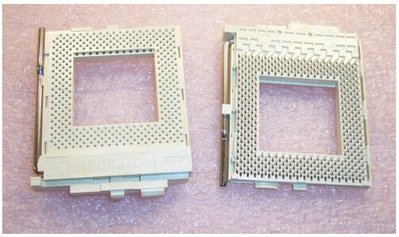I am doubtful you will be able to mount one socket on top of the other without going through much more effort than desoldering the old socket would have been.
Your first problem is the pins of the new socket are likely too thin to be held in place by the old socket. CPU pins are rather thick contacts, the pins on the socket are rather thin.
Second problem is pin length. The pins on a 370 ZIF socket are only long enough to go through the PCB it's going to be soldered on to.The socket is not flat on top because the mechanism for the locking lever stands out a bit. This is no problem for the CPU because it's smaller than the socket but another socket will have to have longer legs than even a CPU to reach into the old socket.
Third problem is locking the top socket on the bottom socket. The lever on both sockets are at the same spot. This might be the least of the hurdles as you can probably modify the top socket so as long as the lever on that is up you can at least open the bottom lever to a certain degree for istallation of the top socket. Still it's another problem you will run into.
Now that I have voiced my concerns I want to say since you have already purchased the parts I'm really hoping you'll prove me wrong! 😀
In case I am actually right with my pessimism: Why don't you get a light aluminium heatsink (PIII doesn't have a high TDP so a relatively light heatsink is totally sufficient) and use silicone to attatch it to the CPU substrate? The surface area on the CPU substrate is more than large enough for silicone to hold a good aluminium heatsink.
Clean the CPU and cooler with IPA, apply good thermal paste (or a graphite pad since those don't age/dry up), apply the silicone on the substrate (not too close to the die and leaving a wide path for air to escape) and press the cooler firmly in place holding it down until the silicone has cured. Take your time so the heatsink is flat on the die and the silicone is completely cured so nothing shifts.
I once built a coppermine celeron with 'integrated' heatsink for quick motherboard test setups just like that. No problems ever. 😎
The Serpent Rider wrote:You can carefully replace the whole plastic part, it's just hotglued to the PCB.
Have you seen this yourself? I have unsoldered ZIF sockets before using a desoldering gun and I have never found hot glue. The contacts in the socket are bent around the bottom plastic part and secure it against the pcb.
